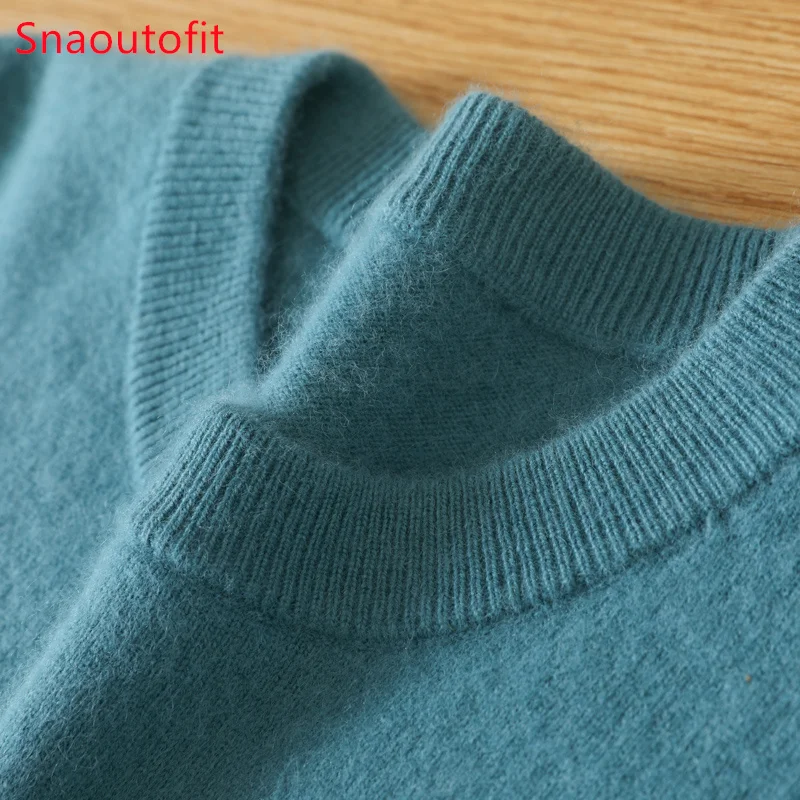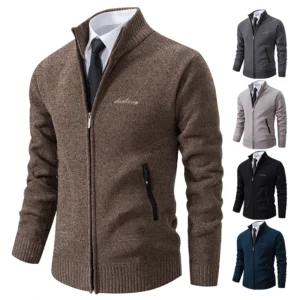Introduction: The Luxurious Warmth of Cashmere for Winter Styling
When winter arrives with its biting winds and plummeting temperatures, premium cashmere emerges as the ultimate cold-weather companion. This exceptional natural fiber offers an unmatched combination of luxurious softness and remarkable warmth without the bulk associated with other winter textiles.
Premium cashmere, particularly Grade A quality with fibers under 16 microns in thickness, provides superior insulation while maintaining an elegant drape and lightweight feel against the skin. This remarkable material offers several key benefits for cold weather wear:
- Exceptional warmth-to-weight ratio (3-8 times warmer than wool while being significantly lighter)
- Natural temperature regulation that prevents overheating
- Breathable fibers that wick moisture away from the body
- Incredible softness that eliminates the itchiness often associated with winter fabrics
- Enduring quality that improves with proper care
Throughout this guide, we’ll explore versatile cashmere combinations that help you stay warm while looking undeniably sophisticated across various settings, from casual weekend outings to professional environments and special occasions. Discovering how to incorporate year-round cashmere outfit ideas into your winter wardrobe creates endless styling possibilities that transition beautifully across seasons.
Understanding Cashmere Quality for Cold Weather Performance
The effectiveness of cashmere as cold-weather wear directly correlates to its quality. Not all cashmere provides equal warmth, durability, or comfort, making quality assessment crucial for winter wardrobe investments.
The Quality-Warmth Connection
Premium Grade A cashmere (under 16 microns in thickness) delivers significantly superior insulation compared to lower grades. These ultra-fine fibers create more air pockets to trap body heat while maintaining a lightweight feel. The difference becomes immediately noticeable in freezing temperatures, where high-quality pieces provide remarkable warmth without restrictive bulkiness.
Fiber length plays an equally important role in cold-weather performance:
- Longer fibers (exceeding 36mm) create stronger, more durable garments that resist pilling
- Extended fibers allow for tighter spinning, creating denser knits with superior wind resistance
- Longer strands reduce the scratchy feel sometimes present in lower-quality cashmere
- Premium fiber length contributes to better shape retention throughout winter wear
Understanding the right choosing right cashmere thickness for different temperature ranges helps optimize your winter wardrobe for maximum comfort and performance. Lightweight cashmere works beautifully for layering, while medium and heavyweight options provide standalone protection in more extreme conditions.
Quality cashmere also undergoes rigorous testing for cold weather resilience:
- Pilling resistance ensures the surface remains smooth even with frequent wearing
- Colorfastness testing prevents fading despite exposure to winter elements
- Tensile strength evaluations guarantee durability through seasonal stretching and movement
These quality indicators directly impact how your cashmere performs during cold weather wear, influencing both comfort and longevity through multiple winter seasons.
Essential Cashmere Pieces for Your Winter Wardrobe
Building an effective cold-weather cashmere collection begins with versatile foundation pieces that can be styled in numerous ways. These essential garments form the backbone of your winter wardrobe, offering maximum versatility while providing exceptional warmth.
Cashmere Sweater Varieties
The quintessential cashmere piece comes in several key styles, each serving different functions in cold weather:
Turtlenecks: Offering neck protection and maximum warmth, these pieces excel in windy conditions and provide a sleek silhouette for layering. 2-ply turtlenecks work well for moderate cold, while 4-ply versions offer protection in freezing temperatures.
Crewnecks: The versatile classic that pairs effortlessly with collared shirts or stands alone. Their clean neckline makes them ideal for scarf pairing in extreme cold.
V-necks: Perfect for layering over shirts or under jackets, these create visual interest while allowing for temperature regulation through neckline exposure adjustment.
Layering Foundations
Cashmere cardigans serve as perhaps the most adaptable cold weather pieces, functioning as both mid-layers and light outerwear. Button-front styles offer quick temperature adjustment, while longer versions provide additional coverage for core warmth. The open-front design creates vertical lines that elongate the silhouette even when wearing bulkier winter layers.
Complete Coverage
For extreme cold, cashmere bottoms deliver unparalleled comfort. Lightweight cashmere leggings function perfectly as base layers under pants, while cashmere-blend trousers provide standalone warmth with refined appearance. These pieces feel exceptionally gentle against sensitive skin while providing crucial insulation for the lower body.
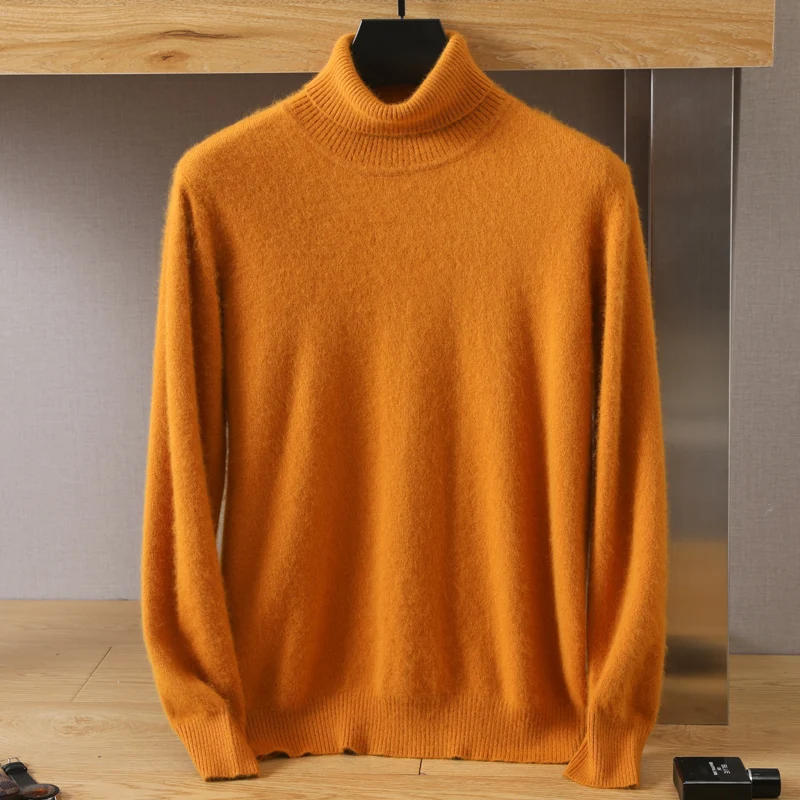
Targeted Warmth Accessories
Strategic accessorizing dramatically enhances cold weather comfort:
- Cashmere beanies prevent crucial heat loss through the head
- Cashmere scarves protect the vulnerable neck area while adding visual interest
- Cashmere-lined gloves combine practical protection with luxurious comfort
- Cashmere socks create a moisture-wicking, blister-preventing layer for winter footwear
These essential pieces work in harmony to create countless seasonal outfit ideas cashmere combinations. The versatility of premium cashmere turtlenecks particularly shines in winter styling, as their high necklines eliminate the need for scarves in moderately cold conditions while providing a sleek foundation for various outfits.
The Art of Layering with Cashmere for Maximum Warmth
Effective cashmere layering transforms good winter outfits into exceptional ones, creating a microclimate that retains body heat while preventing overheating. This scientific approach to winter dressing maximizes the natural insulating properties of cashmere.
Base Layer Fundamentals
The foundation of cold-weather cashmere dressing begins with:
- Ultra-thin cashmere or silk-cashmere blend tops that wick moisture away from skin
- Form-fitting silhouettes that allow for unrestrictive movement
- Strategic selection of crew or V-neck styles depending on outer layers
- Consideration of sleeve length based on jacket or sweater coverage
Mid-Layer Mastery
The insulating middle layer provides the primary warmth barrier:
- Medium-weight cashmere sweaters trap body heat efficiently
- Mens cashmere cardigans create adjustable warmth zones through selective buttoning
- Half-zip cashmere pullovers allow for temperature regulation through zipper adjustment
- Lightweight cashmere vests add core warmth without bulk in arms
Outer Layer Integration
Complete the system with protective outer pieces:
- Wool or cashmere-blend overcoats provide wind protection while complementing cashmere’s natural properties
- Leather jackets create an impermeable barrier against wind while allowing cashmere to breathe
- Water-resistant trench coats with cashmere scarves combine practical protection with luxurious comfort
- Technical shells over cashmere layers unite performance with comfort for active winter pursuits
The key to successful layering lies in creating thin air pockets between garments that trap body heat while allowing moisture to escape. This prevents the uncomfortable dampness that often occurs with synthetic materials, keeping the wearer dry and comfortable even during temperature fluctuations.
Casual Cashmere Combinations for Everyday Winter Comfort
Casual winter outfits benefit tremendously from cashmere’s unmatched combination of comfort and sophistication. These versatile combinations elevate everyday looks while providing exceptional warmth for various casual winter scenarios.
The Weekend Warrior
Perfect for relaxed weekend activities with a balance of comfort and style:
- Oversized cashmere turtleneck in a neutral tone (oatmeal, charcoal, or navy)
- Straight-leg jeans in medium or dark wash
- Leather ankle boots with subtle tread for traction
- Cashmere beanie in a complementary or contrast color
- Optional leather crossbody bag for practicality
This combination works beautifully for weekend errands, casual meet-ups, or relaxed outings where comfort remains paramount without sacrificing style.
Coffee Run Ready
Ideal for quick outings in cold temperatures:
- Cashmere hoodie in a rich color (burgundy, forest green, or camel)
- Thermal leggings or slim-fit joggers
- Weather-resistant snow boots or shearling-lined boots
- Oversized cashmere scarf that can double as a wrap
- Fingerless cashmere gloves for phone accessibility
The casual elegance of cashmere sweaters transforms even the most relaxed outfits into polished looks while maintaining maximum comfort for quick trips outside.
Casual Friday Refinement
Bridging the gap between workweek and weekend:
- Fine-gauge cashmere crewneck in a solid, versatile color
- Dark wash jeans with minimal distressing
- Chelsea boots or loafers depending on weather conditions
- Structured jacket (leather, wool, or waxed cotton)
- Cashmere-blend socks in a subtle pattern
Understanding how to create stylish how wear cashmere jeans style combinations allows for maximum versatility in casual winter wardrobes. The textural contrast between premium denim and luxurious cashmere creates visual interest while providing practical warmth.
Winter Gathering Go-To
Perfect for casual home gatherings or informal social events:
- Cashmere tunic sweater with side slits for movement
- Premium leggings or slim-fit corduroys
- Indoor-outdoor slippers or flat ankle boots
- Delicate cashmere-silk blend scarf for indoor comfort
- Minimal accessories that won’t snag the cashmere
Professional Cashmere Outfits for the Office and Formal Settings
Cashmere transforms professional winter wardrobes by combining boardroom-appropriate refinement with practical warmth. These combinations maintain polished appearances while providing exceptional comfort during commutes and throughout the workday.
Executive Elegance
A sophisticated outfit for formal business environments:
- Fitted cashmere turtleneck in a rich, subtle color (burgundy, navy, or charcoal)
- Wool pencil skirt in a complementary neutral
- Opaque tights (at least 100 denier) for additional warmth
- Knee-high leather boots with moderate heel
- Structured wool coat with cashmere scarf
- Minimal gold or silver accessories that complement without competing
This combination creates a streamlined silhouette while providing remarkable warmth through strategic layering of natural fibers.
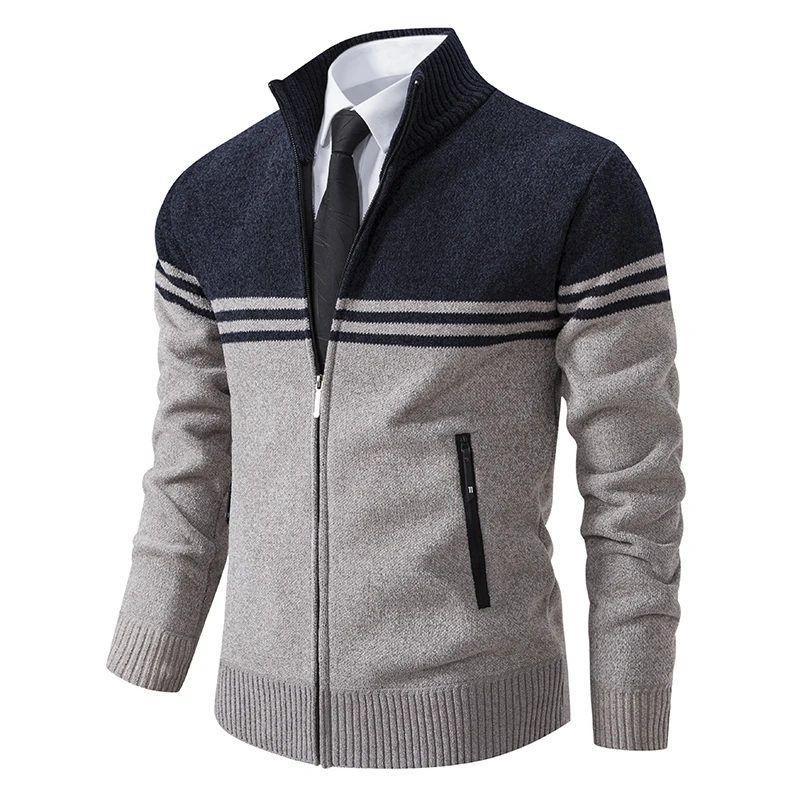
Business Casual Refinement
Appropriate for modern professional environments:
- Cashmere V-neck sweater in a medium-weight knit
- Crisp button-down shirt with collar peeking above sweater
- Tailored trousers in wool or technical fabric blend
- Leather loafers or ankle boots depending on weather
- Cashmere-blend blazer for additional structure and warmth
- Simple leather watch and minimal jewelry
Womens cashmere pullovers in jewel tones add visual interest to neutral professional wardrobes while maintaining appropriate formality for business settings.
Creative Professional
Perfect for design-focused workplaces or creative industries:
- Cashmere sweater dress in a medium weight
- Textured tights in complementary tone
- Ankle boots with comfortable heel
- Statement belt to define waistline
- Long pendant necklace or artistic earrings
- Wrap coat or oversized cardigan for outer layering
This outfit balances creative expression with professional presentation while providing exceptional comfort through cashmere’s natural temperature regulation.
Evening and Special Occasion Cashmere Ensembles
Cold weather events and evening occasions require thoughtful styling that balances elegance with practical warmth. Cashmere offers the perfect solution, elevating formal winter looks while providing genuine comfort during outdoor-to-indoor transitions.
Winter Soirée
Sophisticated yet comfortable for evening events:
- Cashmere cowl-neck sweater in a luxurious shade (deep ruby, midnight blue, or champagne)
- Silk or satin midi skirt with subtle sheen
- Heeled leather or suede boots
- Statement earrings that frame the face
- Velvet clutch for textural contrast
- Optional cashmere wrap for outdoor transitions
The juxtaposition of cashmere’s matte texture against lustrous silk creates visual interest while maintaining necessary warmth for evening events.
Holiday Gathering
Festive yet refined for seasonal celebrations:
- Cashmere sweater dress with subtle embellishment or interesting knit pattern
- Sheer patterned tights (floral or geometric)
- Velvet pumps or embellished flats
- Metallic clutch that references holiday colors
- Delicate jewelry that complements rather than competes
- Cashmere pashmina for added warmth when needed
These sophisticated year-round looks timeless cashmere can be adapted through accessories to suit specific holiday themes while maintaining elegance.
Fine Dining
Elegant comfort for upscale restaurants:
- Slim-fit cashmere turtleneck in a sophisticated neutral
- Wide-leg trousers in complementary tone
- Pointed heels or elegant flats
- Cashmere wrap or stole for dramatic entrance and practical warmth
- Statement cocktail ring or architectural cuff bracelet
- Structured evening bag in luxurious material
This combination ensures comfort during temperature variations common in fine dining establishments while maintaining appropriate formality.
Extreme Cold Weather Cashmere Strategies
When temperatures plummet to truly challenging levels, strategic cashmere deployment becomes essential for maintaining both warmth and style. These advanced techniques maximize cashmere’s natural insulating properties even in the most extreme conditions.
The Arctic Explorer Approach
For temperatures well below freezing:
- Begin with an ultra-thin cashmere base layer against skin
- Add a medium-weight cashmere mid-layer (turtleneck or crewneck)
- Top with a cashmere cardigan or zip-front sweater
- Complete with technical outerwear specifically rated for extreme cold
- Add cashmere accessories (hat, neck gaiter, lined gloves)
- Consider cashmere-blend leggings under pants for lower body protection
This comprehensive approach creates multiple heat-trapping zones while maintaining mobility and comfort, effective even in sub-zero temperatures.
Strategic Body Mapping
Focus insulation where it matters most:
- Concentrate cashmere layers around the core and neck
- Use cashmere-silk blends for less bulky layering under arms and at joints
- Apply cashmere accessories to known heat-loss areas (head, neck, extremities)
- Consider cashmere-lined boots or cashmere socks for critical foot warmth
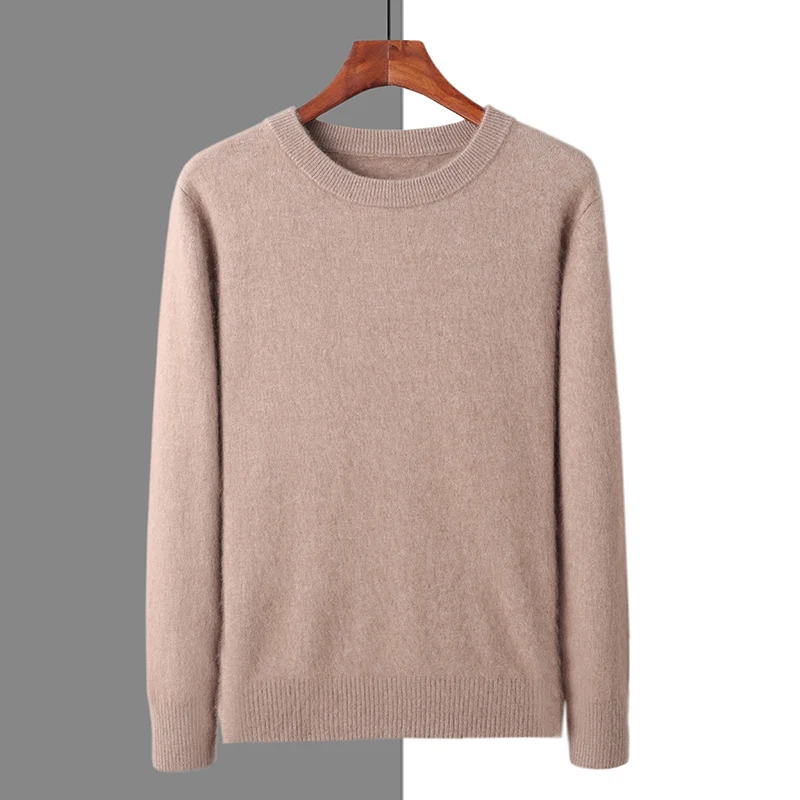
Outdoor Activity Optimization
Maintain warmth during winter recreation:
- Select close-fitting cashmere base layers that won’t bunch under technical gear
- Choose cashmere-blend performance pieces specifically designed for activity
- Mens cashmere pullovers in medium weights work perfectly under ski jackets or winter sport shells
- Pack lightweight cashmere accessories for quick warmth addition during breaks
- Focus on moisture management through strategic layering with cashmere
These techniques allow for enjoyment of winter activities with the comfort and performance benefits that only premium cashmere can provide.
Styling Techniques: Textures, Colors, and Accessories
Mastering the aesthetic elements of cashmere styling elevates winter outfits from merely warm to truly exceptional. The thoughtful combination of textures, colors, and accessories creates visual interest while maximizing cashmere’s luxurious qualities.
Texture Play
Create dimension through thoughtful material contrasts:
- Pair smooth, fine-gauge cashmere with textured leather for edge
- Contrast cable-knit cashmere with sleek wool for sophisticated depth
- Combine ribbed cashmere with fluid silk for elegant movement
- Match matte cashmere with subtle sheen from satin or velvet accents
These textural conversations add visual interest even to monochromatic outfits while maintaining a cohesive cold-weather aesthetic.
Color Strategy
Employ color theory for maximum impact:
Monochromatic Elegance: Layer varying shades of a single color family for sophisticated depth (cream, ivory, and white create a luxurious winter white ensemble)
Complementary Contrast: Pair opposite color wheel colors for vibrant energy (navy cashmere with rust accessories creates striking balance)
Seasonal Palette: Incorporate rich winter tones like burgundy, forest green, and sapphire blue to reference the season without being too literal
Understanding mastering cashmere transitional wardrobe principles helps create color strategies that work across temperature fluctuations.
Silhouette Balancing
Create proportional harmony when styling bulkier cashmere pieces:
- Balance oversized cashmere sweaters with slim bottoms
- Offset voluminous cashmere cardigans with structured pieces underneath
- Create waist definition with belts over cashmere tunics or dresses
- Layer varying lengths for vertical interest that elongates the silhouette
This thoughtful approach to proportion ensures that even the coziest cashmere pieces maintain a flattering and intentional appearance.
Cashmere Wrap Sweaters, Women's Cashmere Pullovers
$75.89 Select options This product has multiple variants. The options may be chosen on the product pageCashmere Cable Knit Sweaters, Women's Cashmere Pullovers
Price range: $111.82 through $112.93 Select options This product has multiple variants. The options may be chosen on the product pageCropped Cashmere Sweaters, Women's Cashmere Pullovers
$155.77 Select options This product has multiple variants. The options may be chosen on the product page- Price range: $102.02 through $109.37 Select options This product has multiple variants. The options may be chosen on the product page
Oversized Cashmere Sweaters, Plus Size Cashmere Sweaters, Women's V-Neck Cashmere Sweaters
$136.87 Select options This product has multiple variants. The options may be chosen on the product page- Price range: $108.11 through $130.03 Select options This product has multiple variants. The options may be chosen on the product page
Maintaining Your Cashmere for Long-Lasting Winter Wear
Proper care significantly extends the life of premium cashmere, ensuring your cold-weather wardrobe remains beautiful and functional for many winter seasons. Winter presents unique cashmere care challenges that require special attention.
Winter-Specific Care Techniques
Protect your investment with these seasonal practices:
- Brush cashmere pieces gently after wearing to remove surface debris before it settles into fibers
- Allow worn cashmere to rest 24 hours between wearings to regain its shape and release moisture
- Use a cashmere comb or sweater stone to address minor pilling that occurs with frequent winter wear
- Store clean cashmere in breathable cotton bags rather than plastic when not in regular rotation
Weather Protection Strategies
Shield cashmere from harsh winter elements:
- Apply a gentle fabric protector spray to frequently worn accessories
- Avoid direct contact between cashmere and rough surfaces that can cause friction and pilling
- Remove salt splatter immediately with a damp cloth to prevent fiber damage
- Keep a lint roller handy for quick refreshes throughout the day
Understanding proper how wash cashmere home techniques ensures your winter pieces remain in optimal condition without requiring professional cleaning after every wear.
Between-Season Storage
Prepare cashmere for long-term rest:
- Clean all pieces thoroughly before storing for spring/summer
- Remove any stains or spots that might attract moths
- Add cedar blocks or lavender sachets as natural moth deterrents
- Store in cool, dry places away from direct sunlight
- Fold rather than hang to prevent stretching during extended storage
These careful practices protect your investment and ensure your cashmere pieces emerge ready for the next cold season.
Can Cashmere Be Both Fashionable and Functional in Extreme Cold?
This common question reflects a widespread misconception that beauty and performance must be mutually exclusive in winter clothing. In reality, premium cashmere represents the perfect union of fashion and function, especially in challenging cold conditions.
Quality cashmere’s thermal properties significantly outperform many synthetic alternatives, providing up to eight times the insulation value of regular wool at a fraction of the weight. This remarkable warmth-to-weight ratio allows for comfortable layering without the bulky, shapeless silhouettes often associated with extreme cold weather dressing.
The natural crimp of cashmere fibers creates millions of tiny air pockets that trap body heat while still allowing moisture vapor to escape, preventing the clammy feeling often experienced with synthetic insulation. This breathability is particularly valuable during indoor-outdoor transitions common in winter.
Beyond physical warmth, cashmere provides psychological comfort through its beautiful appearance and exceptionally soft hand-feel. The emotional boost of wearing aesthetically pleasing garments during dreary winter months contributes to overall well-being and confidence, proving that functionality and beauty can indeed coexist in cold weather attire.
How Do Different Cashmere Weights Perform Across Winter Temperatures?
Understanding cashmere weight categories helps optimize your winter wardrobe for specific temperature ranges and activities. This knowledge ensures you select the right pieces for various cold weather scenarios.
| Cashmere Weight | Ply Count | Ideal Temperature Range | Best Applications |
|---|---|---|---|
| Lightweight | 1-2 ply | 40-55°F (4-13°C) | Base layers, indoor wear, early fall/late spring |
| Medium-weight | 3-4 ply | 25-45°F (-4 to 7°C) | Everyday winter wear, versatile layering pieces |
| Heavyweight | 5+ ply | Below 25°F (below -4°C) | Extreme cold, outdoor activities, standalone warmth |
Lightweight cashmere excels as layering pieces, providing excellent temperature regulation without bulk. These fine-gauge pieces move effortlessly under other layers while adding significant warmth.
Medium-weight cashmere represents the most versatile winter option, functioning well as either mid-layers in extreme cold or standalone pieces in moderate winter conditions. These pieces offer the ideal balance of warmth and silhouette maintenance.
Heavyweight cashmere delivers exceptional warmth even in severe conditions, often eliminating the need for bulky outer layers during brief outdoor exposure. These substantial pieces provide dramatic texture and luxurious drape while delivering remarkable insulation.
When shopping online, evaluate cashmere weight by noting:
- Ply count (higher numbers indicate heavier fabric)
- Gram weight (typically ranging from 200-600+ g/m²)
- Description terms like “fine gauge” (lightweight) vs. “chunky knit” (heavyweight)
- Seasonal categorization provided by the retailer
This understanding allows you to build a comprehensive cashmere collection that performs beautifully across the full spectrum of winter conditions.

